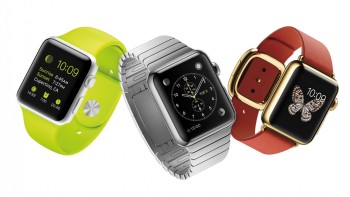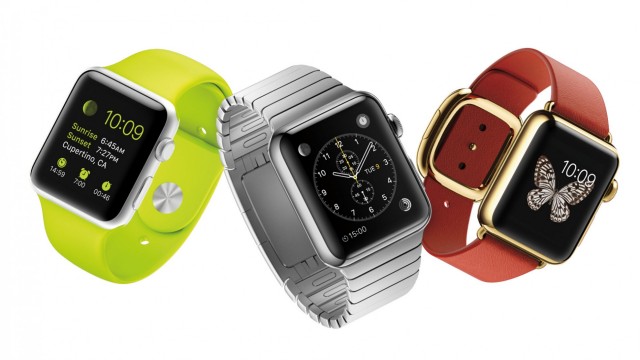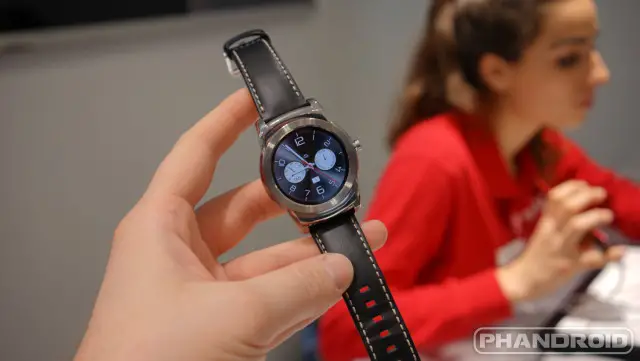
What the April 24th arrival of the Apple Watch means for Android Wear Smartwatches

Apple already gave us a peak at their first ever smart watch back in 2014, but we haven’t gotten many hard details until just now. This is the Apple Watch, and even if you don’t plan to buy anything Apple anytime soon there’s good reason to take notice. They’ve finally let loose a release date — April 24th, with pre-sales commencing April 10th — and it’s that very day we’ll see just how big of a market there truly is for smart watches.
With reports that only 700,000 Android Wear devices have been sold there’s no secret it hasn’t quite exploded yet, but many of today’s smart watch manufacturers are facing the typical challenges of an infant market that is only just now starting to find its way. You might hate to admit it, but the Apple Watch has decent enough potential to change that.

We’ve seen Apple do it time and time again. Smartphones of today wouldn’t be the smartphones of today without Apple’s influence. Tablets of today wouldn’t be the tablets of today without Apple’s influence. Google’s early work on wireless payments with Google Wallet was overlooked until — you guessed it — Apple Pay made the world wake up.
It’s an unfortunate trend to see, but it’s a trend that does exist. We suspect it’ll continue in the realm of smart watches. Is that to say the sudden arrival of Apple’s first wearable is going to make the Android Wear space explode overnight?
Not necessarily. There’s still a lot of work to be done such as platform maturation, improvements to low-power technology and battery life and, most importantly, increasing accessibility in areas of usability and price.
LG, ASUS, Motorola and Huawei aren’t going to wake up tomorrow morning and find an extreme uptick in sales because people are suddenly more aware that smart watches are a thing (or else that would have happened the first time Apple showed the Apple Watch). But what this will do is spur the sort of competition that will fuel those companies’ desire to innovate and make a smart watch experience that’s truly irresistible.
There’s also the issue of Apple’s own chance to do well in the space. We tend to assume everything “Apple” will sell well, but what they showed today was actually quite dull and does very little to disrupt the smart watch scene that other OEMs haven’t already tried.
Using your watch to make and receive calls? We’ve seen that in the Samsung Gear S and the upcoming LG Watch Urbane LTE (though both admittedly don’t run Android Wear). Apple Glances that show you stuff like music controls, weather, calendar updates and more information from your most used apps? That’s basically Google Now, the driving platform behind Android Wear’s very existence.
Saying the Apple Watch is basically an iPhone that can be slapped to your wrist isn’t the least accurate description. Apple hasn’t done anything relatively new with the Apple Watch, though we’ll admit it does seem to be the beneficiary of damn good engineering.
That raises a very interesting question, though: if Android Wear hasn’t done enough to capture the interests of the public, what exactly does the Apple Watch do differently? As we always say, it doesn’t matter who does things first, it matters who does them right. The verdict is still out on the Apple Watch and whether it gets everything right.
The initial word around Phandroid’s water cooler is that there really isn’t any one thing that blows the competition out of the water. Its underwhelming 18-hour battery life, a minimum price tag of $350 and a lack of support for standard 22mm watch bands are the biggest knocks. We also imagine consumers won’t be rushing out to buy the versions of these that will cost upwards of $1,000 and $10,000. No, really, Apple has actually lost it:
It’s those exact reasons why Android Wear manufacturers — and any company that makes a smart watch, really — can use this as a perfect excuse to do better. Apple may not be changing the game through never-before-seen features and innovation, but their sheer presence and the power of their name alone certainly gives other OEMs a lot more incentive to compete for top honors. Let’s hope that competition will bring a horde of devices worth getting excited for and help the wearables category blossom into a viable, long-term and lucrative area of business for everyone involved.
